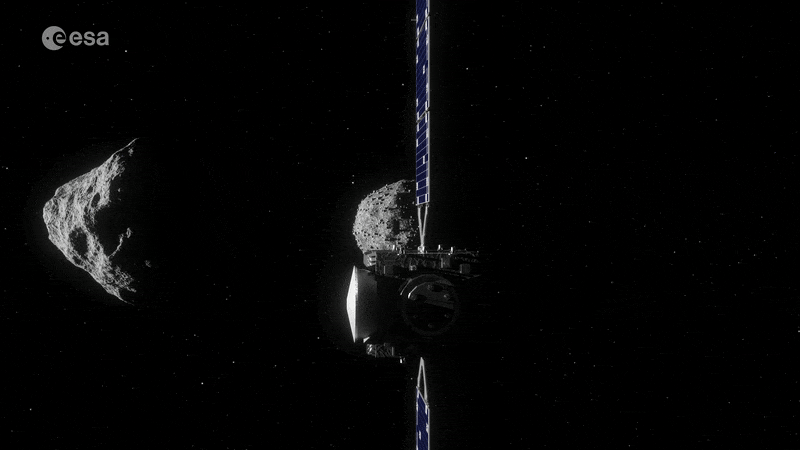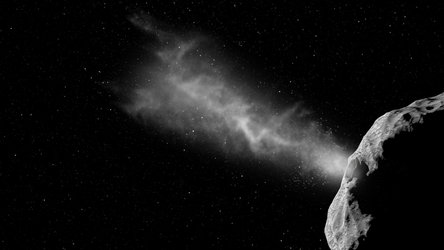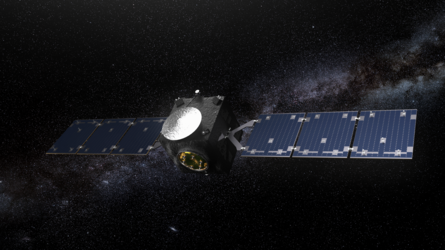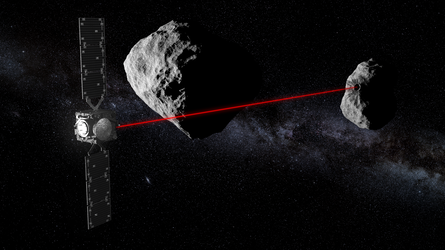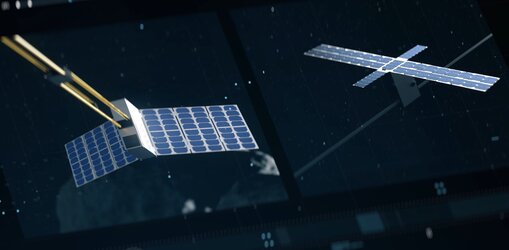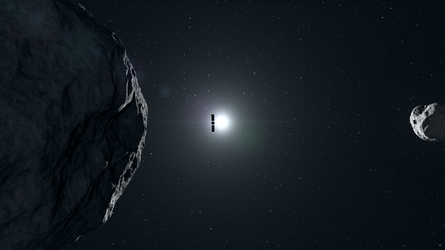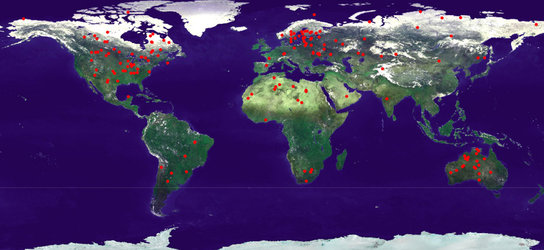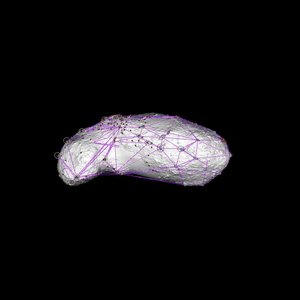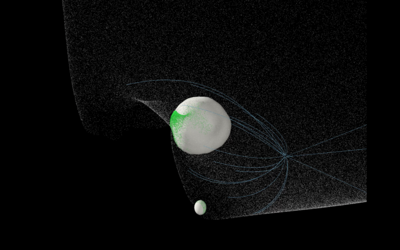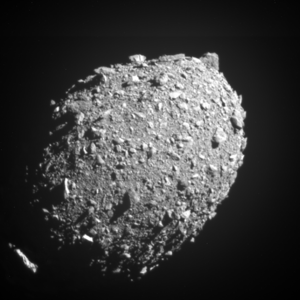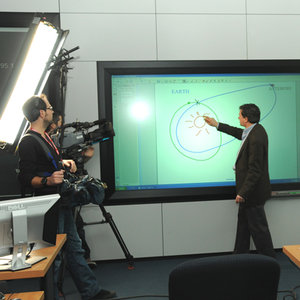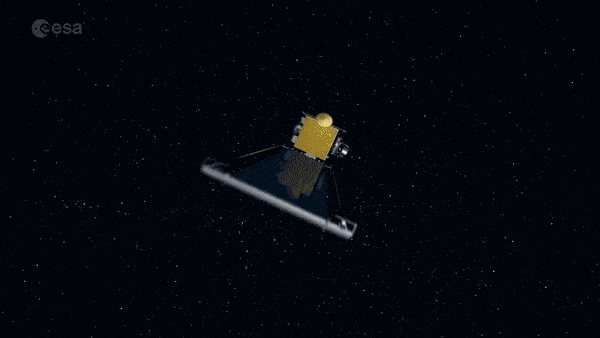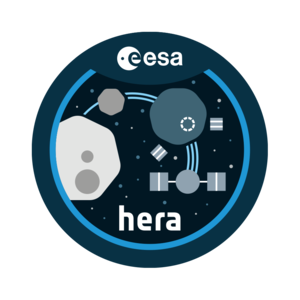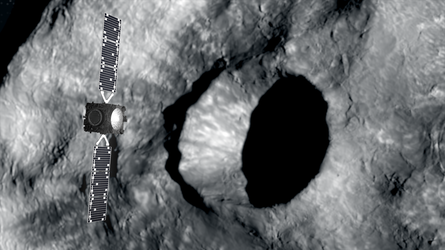Bonus science
Hera’s main goal is to fully validate the kinetic impactor method of planetary defence – enabling its applicability to other targets – but its voyage to the Didymos asteroid system will also deliver some unique science.
In order to derive Didymorphos’s mass and the ‘momentum efficiency’ of DART’s impact, Hera will perform a close-up survey of all the asteroid moon’s relevant properties, including its surface character, porosity and internal structure, the latter derived from radio science results.
The mass of Dimorphos will be measured by observing the so-called ‘wobble’ of its parent Didymos asteroid. Hera will achieve this by selecting a key landmarks, such as boulders, on the larger asteroid surface then tracking their motion around the centre of mass of the overall asteroid system.
The entire moon will be surveyed down to a resolution of a few metres, with the direct vicinity of the DART crater mapped down to 10 cm resolution.
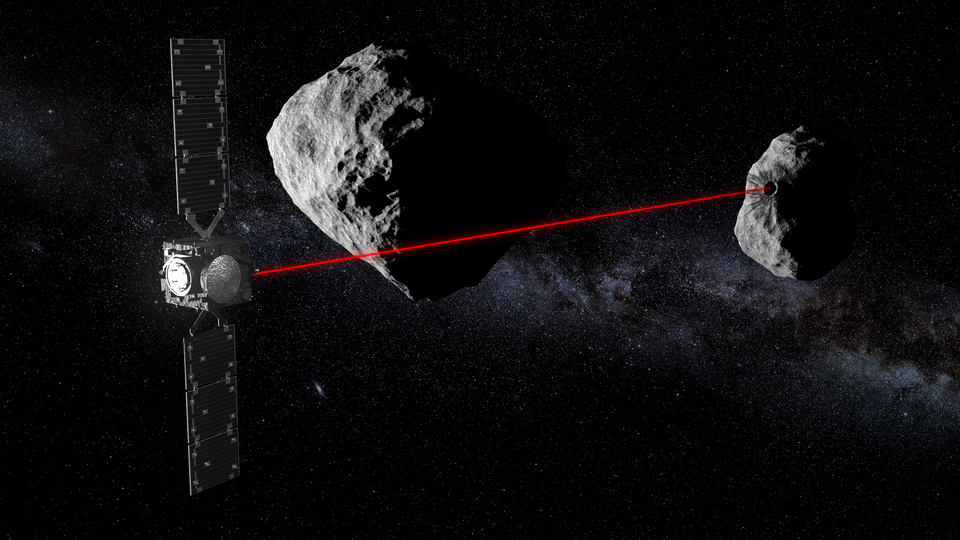
With all this data combined – Dimorphos’s mass, structure and orbital shift – then these results could be turned around in future to ‘decode’ the mass and character of other asteroids, providing a means of deciphering impact craters on their surface.
More broadly, enhanced understanding of collision physics and cratering behaviour – until now only modelled and tested down to the centimetre scale on Earth – could revolutionise our current paradigms of Solar System formation.
While the size, structure and depth of the crater will provide fresh insights into the DART impact, Hera will also illustrate the consequences of this collision on the rest of Dimorphos. The impact might well trigger effects all across its surface, including another crater on the opposite ‘antipodal’ side of Dimorphos and resulting ejecta, large scale cracking, avalanches and granular flows.
At 160 m across Dimorphos itself will be the smallest asteroid yet visited by humankind, while much of its 780 m parent’s surface will also be mapped on an opportunistic basis. Surveying in two in concert should reveal much about the formation of binary asteroids, which make up 15% of the known asteroid population.
If the two turn out to be made of the same material, then it might be that Dimorphos is the result of Didymos spinning faster than its structure could endure: debris thrown off from its surface eventually congealed into Dimorphos. Alternatively, the two bodies could have met and gravitationally locked together in space.
Down at smaller scales, Hera’s surface observations will reveal the range of physical phenomena other than gravity that govern asteroid surfaces, influence their material properties and keep them bound together. What are the relative roles of electrostatic and Van der Waals forces, for instance? One proposal is that the most finely-grained asteroids might resemble ‘fairy castles’, crumbling to the touch. Such findings would hold relevance for asteroid mining as well as planetary defence, while also offering insight into the very earliest microscopic-scale processes of accretion, right back at the dawn of this and other planetary systems.



